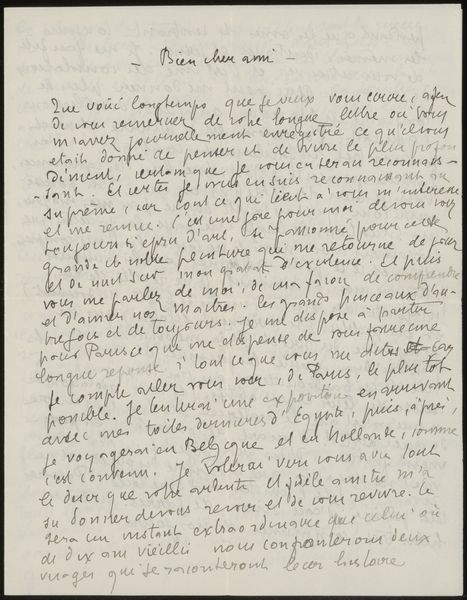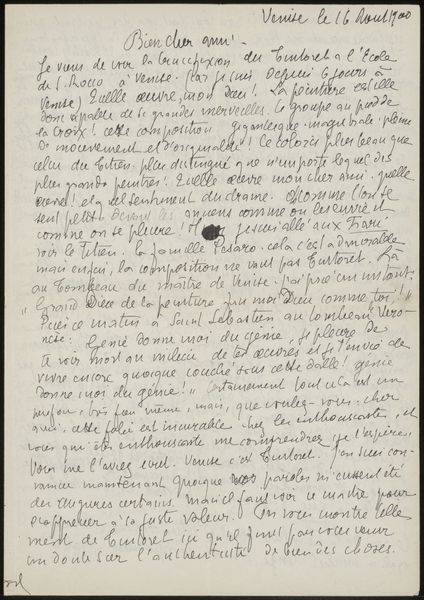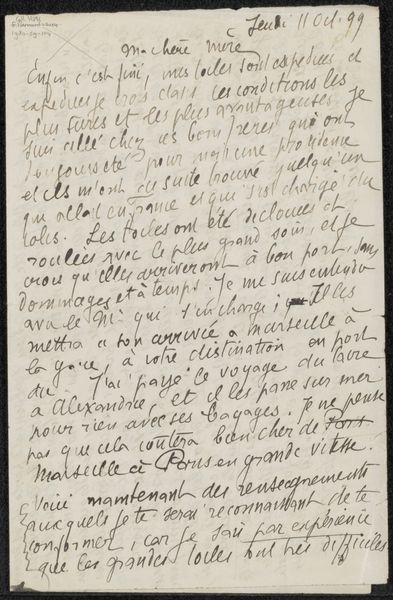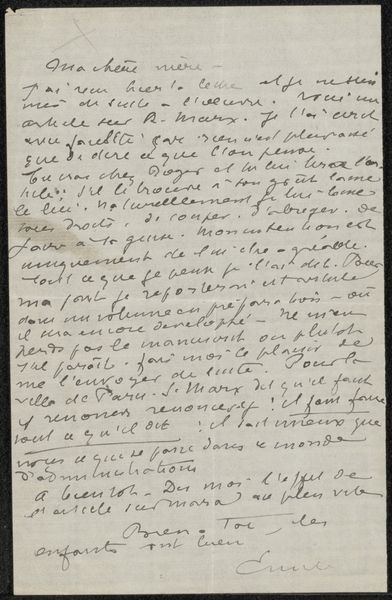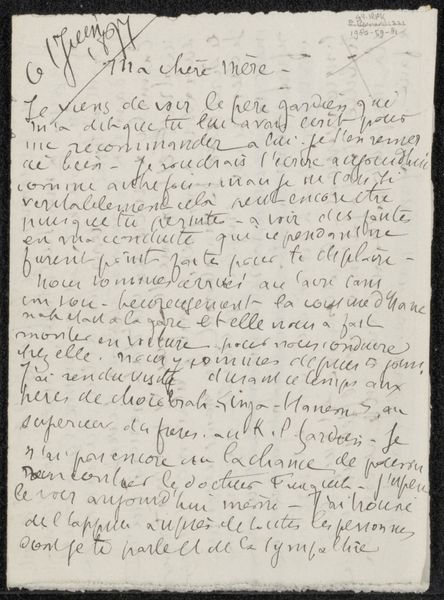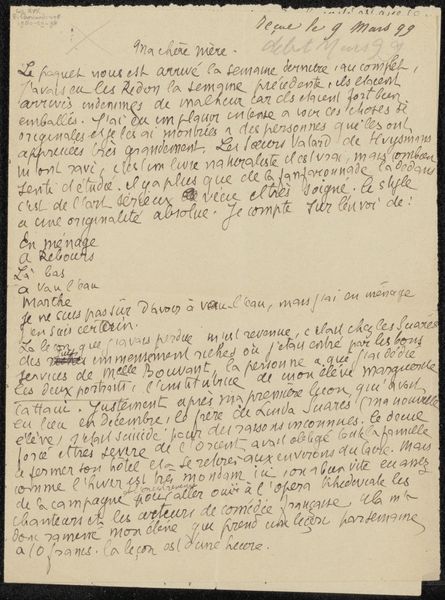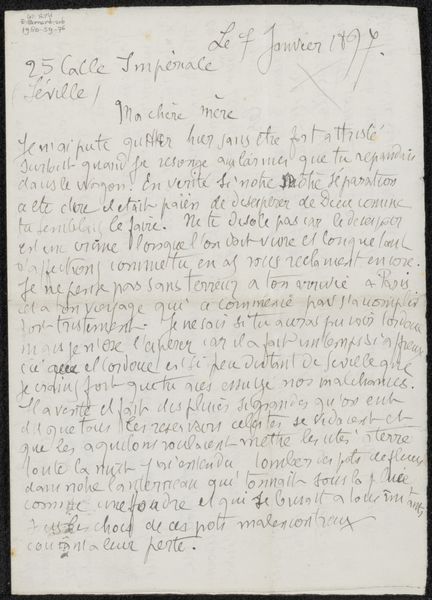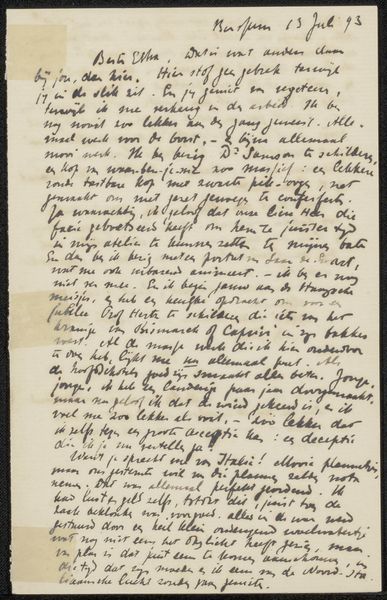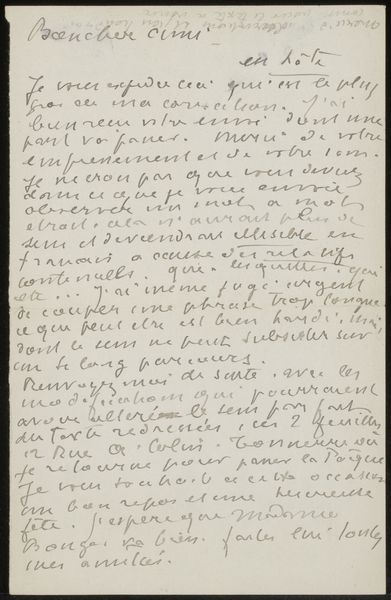
drawing, paper, ink, pen
#
drawing
#
hand-lettering
#
hand drawn type
#
hand lettering
#
paper
#
personal sketchbook
#
ink
#
hand-drawn typeface
#
ink drawing experimentation
#
intimism
#
pen-ink sketch
#
pen work
#
sketchbook drawing
#
pen
#
sketchbook art
#
modernism
Copyright: Rijks Museum: Open Domain
Editor: Here we have "Brief aan Hèloïse Bernard-Bodin," potentially from 1899, by Émile Bernard. It's an ink drawing on paper, a letter perhaps? The handwriting, while beautiful, is incredibly difficult to decipher. It gives the piece an intimate, almost secretive mood. What do you see in this work? Curator: Yes, I feel drawn into its secrets as well. What grabs me is how Bernard uses the act of writing itself as a form of artistic expression. The *letter*, the personal correspondence, becomes the *artwork*. The density of the ink, the way the words are packed together…it feels like he’s pouring his thoughts and feelings directly onto the page, unfiltered. Can you see how some of the words almost become abstract shapes, a kind of visual texture? Editor: Absolutely. It's less about *what* the letter says, and more about the feeling it evokes. Almost like he is experimenting with language as form. Curator: Precisely! He’s playing with the boundaries between text and image. It reminds me of illuminated manuscripts, where the text becomes ornate, decorated. Do you see any hints of the content? The letter *is* to his mother so… Editor: I can see "ma chere mere" at the top! It also looks like he mentions “oriental.” Given the date, is it connected with some orientalist fantasy of the time? Curator: That's a perceptive observation. Late 19th century Europe was fascinated with the "Orient", although often based on imagination rather than reality. It adds a layer of complexity to this very intimate piece. He's sharing something personal with his mother, yet filters this sentiment through an artistic lens, tinted by contemporary trends. Editor: That's fascinating. I hadn't considered the influence of orientalism here. It's a reminder that even the most personal artworks can be influenced by broader cultural currents. Curator: Precisely! That interplay of personal and public is where things get interesting, isn't it? Editor: It certainly is. I'll definitely look at similar artworks with a different perspective now.
Comments
No comments
Be the first to comment and join the conversation on the ultimate creative platform.
